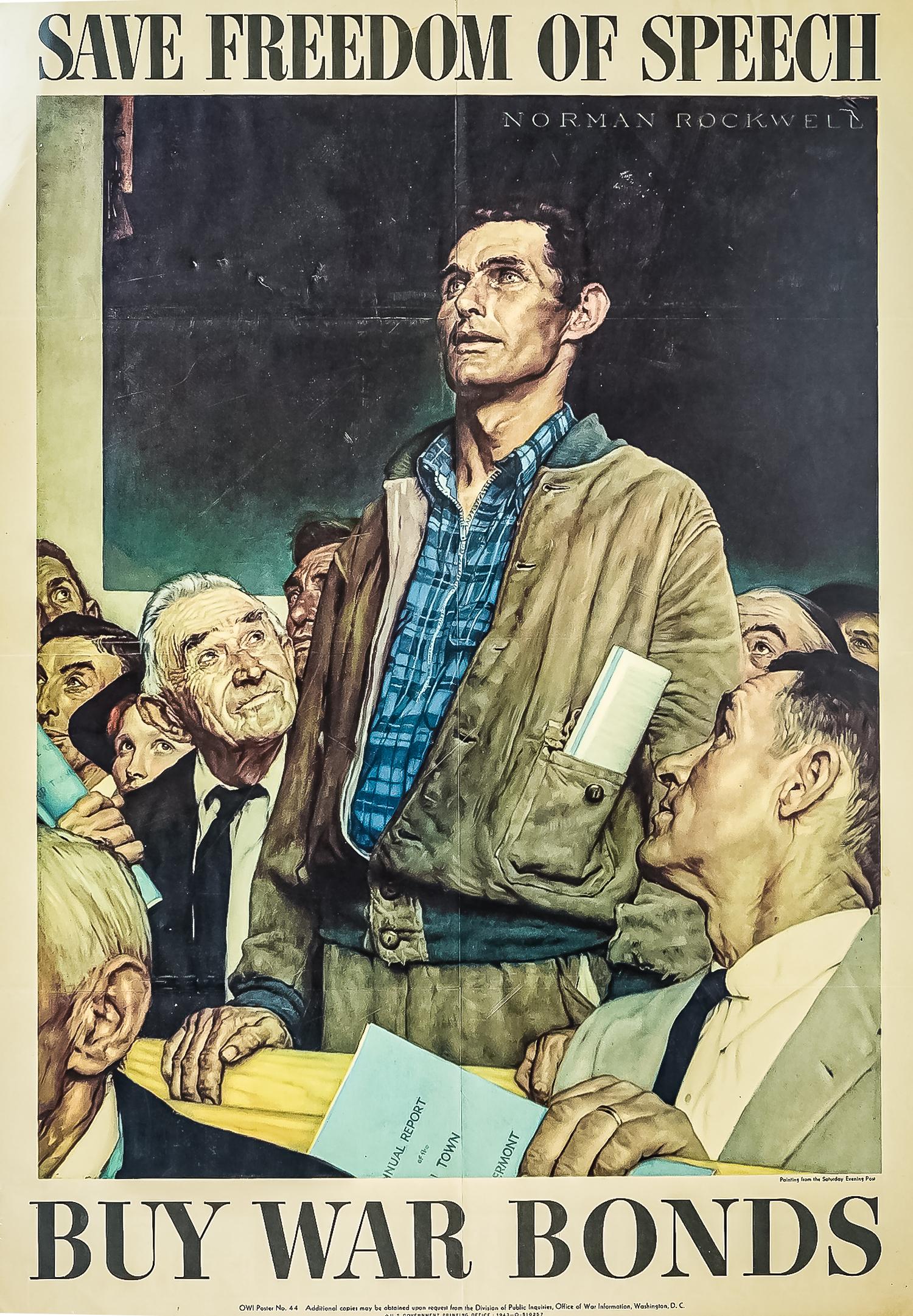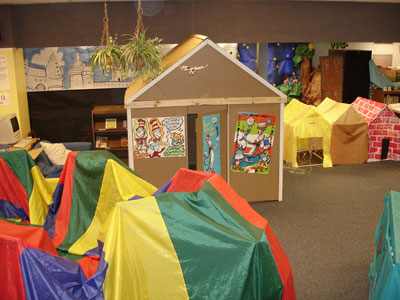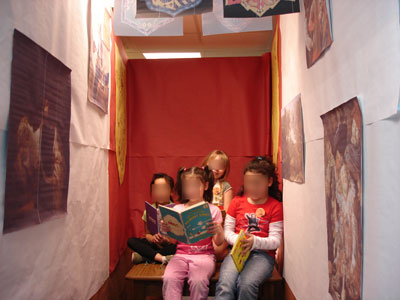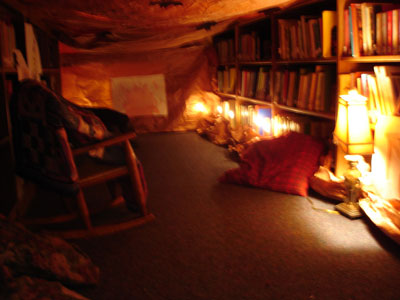No Child Left Behind.
Well.
My sister Linda is a media specialist in Gwinnett County, where last year they gave their media centers zero dollars to buy books with, but that’s another story. A couple of weeks ago she forwarded to me a response she had gotten from her congressman, who shall remain nameless in his representation of Georgia’s Seventh District, about supporting H.R. 2864.
H.R. 2864 is an amendment to that most perfect of laws, No Child Left Behind. I know what you’re thinking, what kind of madman would advocate changing a law that has served our children so well? Without NCLB, how would we ever have gotten halfway to having every single one of our children performing at or above grade level? (In case you had forgotten, that’s the goal: in 2014, every single child will perform at grade level. We will achieve this by testing them until their ears bleed.)
But Rep. Paul Grijalva [D-AZ] has had an insane idea: what if we required every school to have a highly qualified library media specialist? I know, it’s crazy talk.
As you know, NCLB requires schools to verify that their classroom teachers are “highly qualified,” i.e., provide documentation of their competence in their subject area. This might mean passing a standardized test for teachers, well, duh!, or even having a degree in the subject. If you teach more than one subject, e.g., earth science and biology, then that means providing evidence of competence in both areas.
The more cynical among you have already spotted that “highly qualified” has nothing to do with “highly competent,” which is not adjudicated by NCLB, praise be to its name.
If you teach in a rural school, which by the DOE’s own calculations means about a third of all American schools, and you have to teach all kinds of things because it’s a little hard to get teachers out in the middle of Montana, don’t worry: you have three years to cough up evidence of competence in your field(s). If not, then you have to be fired. Because if we don’t fire you, there’s no way to get 100% of the students performing at grade level by 2014.
That’s “highly qualified.” As columnist Bob Herbert pointed out in his New York Times op/ed of 10/2/07, all that documentation and certification is not the same as effectiveness. (Of course, then Mr. Herbert weasels out of it with “New forms of identifying good teachers … have to be established before any transformation of American schools can occur.” Yup, that’s what we gotta do, all right, all right. Carry on.)
Why, you might ask, would I want to saddle media specialists with the burden of proof that their colleagues in the classroom have to bear? Allow me to point out that even if the amendment only required schools to have any kind of media specialist in their building, it would be a radical move. There are more than a few states which do not, in fact, require schools to have media specialists at all. So if we have to speak NCLBese to make sure schools have such a critical piece of the puzzle on hand, then so be it.
Back to Rep. X and H.R. 2864. My sister had emailed him, asking for his vote in favor of this amendment. Astonishingly, he responded that “quite frankly” he questioned “the need for a library media specialist in every public school.”
His reasoning? He sees maybe the need at the high school level, because high school students regularly engage in academic research for college. But “a fourth grade student has little need for a highly trained library specialist who can teach advanced research techniques.” What a fourth grader needs is a librarian who can “make reading enjoyable,” and “instilling a love of reading does not require an advanced certification in library media studies.”
Actually, Rep. X (I just know I’m going to slip up and call him John Linder in a moment), instilling a love of reading does in fact require advanced certification in your home state of Georgia. We have to have a master’s degree even to get into a media center in this state. So you’re wrong about that.
What else might you be wrong about? Those who keep harping on how our schools have to produce workers who are expected to maintain our nation’s competitiveness in the world economy, and I believe some might even be found in your party, Rep. X, might be startled to hear you say that we don’t need to teach our elementary students how to find and use information, how to evaluate information, how to solve problems with information.
They would approve highly of the fact that I start teaching second graders how to look up books and find them on the shelf, that in fact by Thanksgiving almost all of them can do it flawlessly, and that by the end of the year I have first graders and kindergarteners who have learned the same skill.
They would really approve of the fact that all of third grade spends the year learning to implement the Big 6 model using a wide variety of information sources, including the internet. These are eight-year-olds, Rep. X., and yet you would have me wait an entire year more before even trying to “instill a love of reading”? Are you talking story time, Rep. X? Honey, please.
And so you can see why, when talk turns to reauthorizing NCLB, all blessings upon it, I just roll my eyes. Look who’s doing the reauthorization. Can we test them until their eyes bleed?


 You can see the portraits in the stairwell. Behind the camera is the Great Hall, and under that is Slytherin’s commons room. I took the opportunity to dress up as Snape and snarl at children all day. A couple of kids actually, and correctly, addressed me as “Professor Snape.” I also identified every redheaded child as a Weasley, although I think only one was old enough to get it.
You can see the portraits in the stairwell. Behind the camera is the Great Hall, and under that is Slytherin’s commons room. I took the opportunity to dress up as Snape and snarl at children all day. A couple of kids actually, and correctly, addressed me as “Professor Snape.” I also identified every redheaded child as a Weasley, although I think only one was old enough to get it. Everyone’s favorite of the day was Mr. Tumnus’s cave. It was very cozy, and the way they used the actual shelves was quite witty. Believe it or not, that was a conscious design decision on the part of the young ladies who put it together Thursday afternoon.
Everyone’s favorite of the day was Mr. Tumnus’s cave. It was very cozy, and the way they used the actual shelves was quite witty. Believe it or not, that was a conscious design decision on the part of the young ladies who put it together Thursday afternoon.